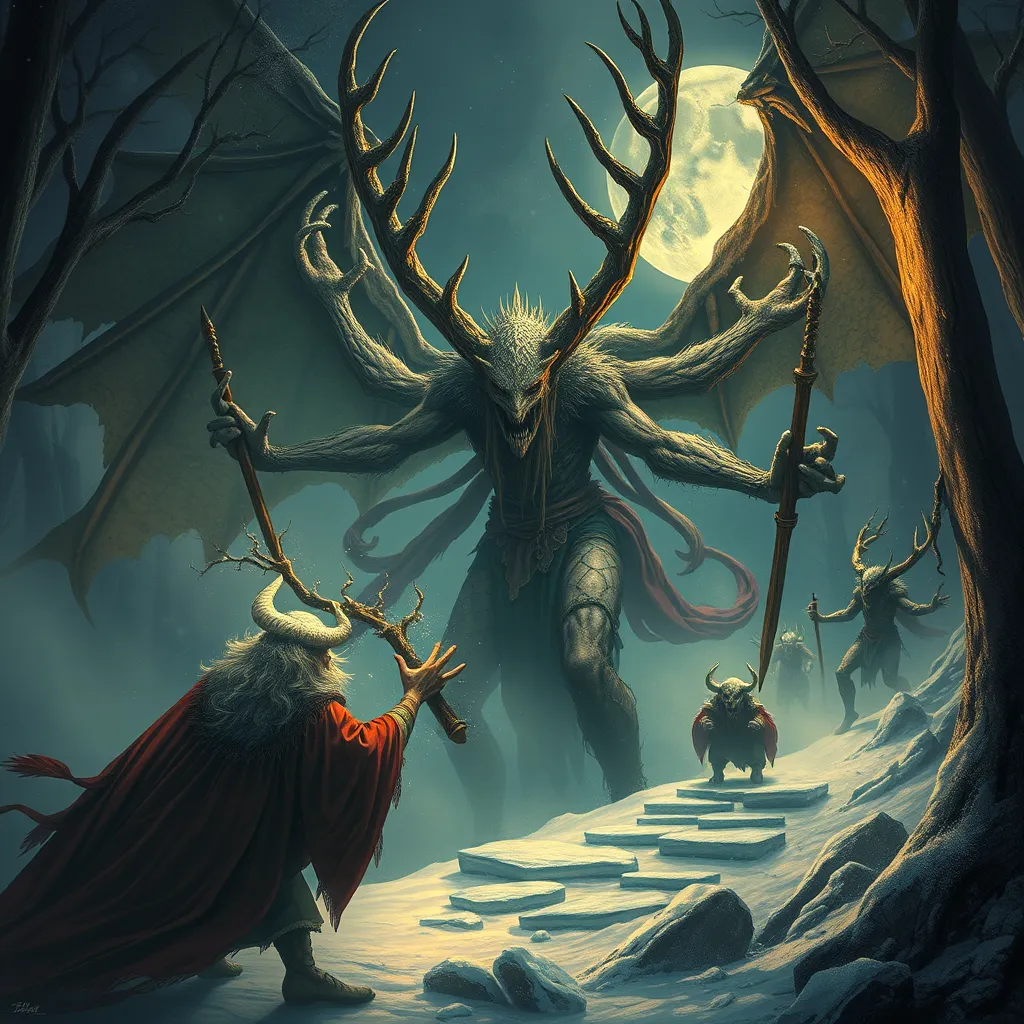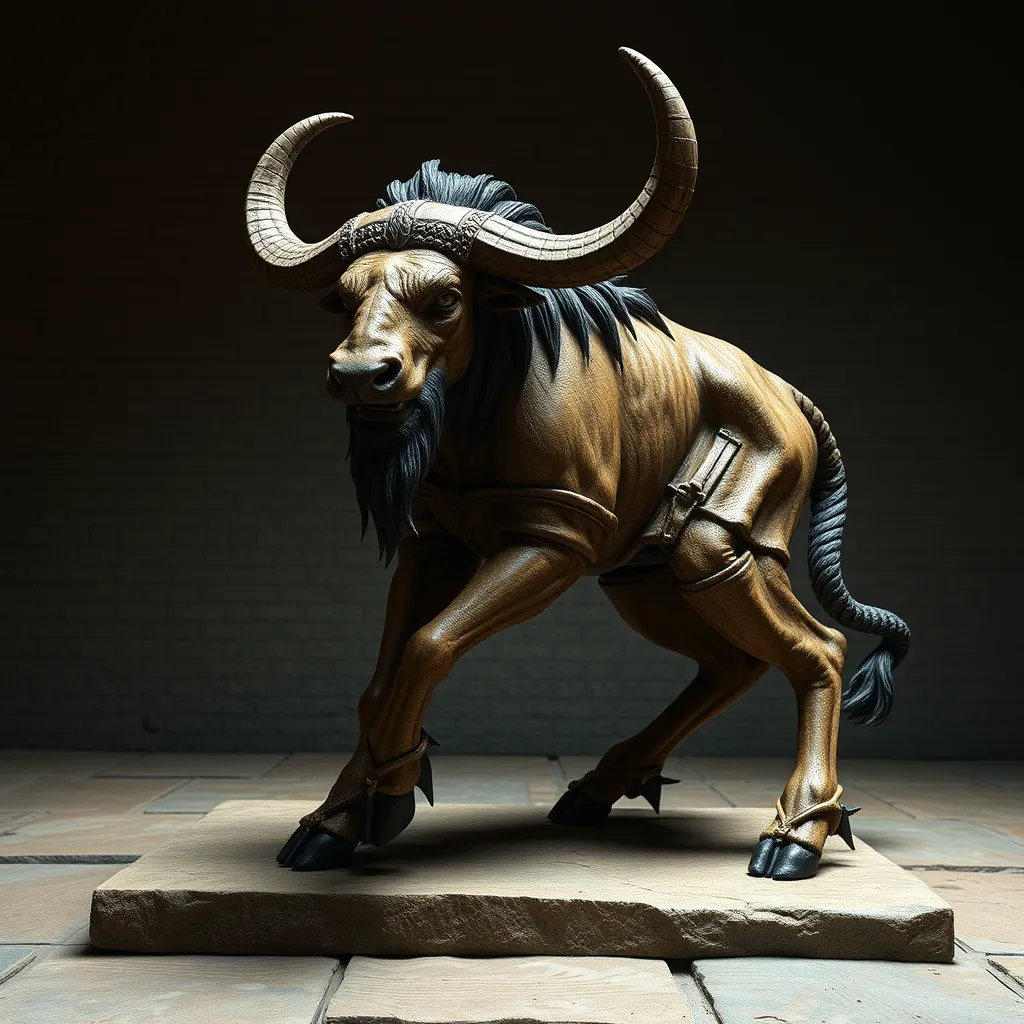The Tengu’s Connection to the Chinese Dragon: Exploring the Similarities and Differences
I. Introduction
The Tengu is a fascinating creature rooted in Japanese mythology, often depicted as a supernatural being with both human and avian traits. Traditionally viewed as protectors of the mountains and forests, Tengu embody a complex blend of benevolence and mischief, serving as both guardians and tricksters. In contrast, the Chinese Dragon is a powerful symbol in Chinese folklore, revered for its strength, auspiciousness, and ability to control natural elements. This article aims to explore the connections, similarities, and differences between Tengu and Chinese Dragons, shedding light on their roles in their respective cultures.
II. Historical Context of Tengu and Chinese Dragons
A. Origins and evolution of Tengu in Japanese culture
Tengu originated from ancient beliefs in Japan and have evolved significantly over time. Initially considered nature spirits or kami, they were depicted as bird-like creatures that could shape-shift into humans. By the Edo period, Tengu became associated with the warrior class and were often depicted as skilled martial artists. This transformation reflects the changing societal values in Japan, where Tengu became symbols of both danger and protection.
B. Historical significance and representations of Chinese Dragons
The Chinese Dragon has a long and illustrious history, symbolizing imperial authority and cosmic power. Unlike the often fearsome dragons of Western mythology, Chinese Dragons are benevolent and are associated with water, rain, and fertility. They are often depicted in art as long, serpentine creatures with antler-like horns, embodying strength and auspiciousness. Historically, dragons were linked to emperors and were believed to bring good fortune and prosperity.
C. Cross-cultural influences between Japan and China
Throughout history, Japan has been influenced by Chinese culture, especially in the fields of art, religion, and mythology. The concept of dragons was adopted into Japanese mythology, where they merged with indigenous beliefs. Conversely, the Tengu, although primarily a Japanese creation, reflects influences from Chinese folklore and Buddhism, showcasing a blend of cultural elements that enrich both traditions.
III. Physical Characteristics
A. Description of Tengu’s appearance and forms
Tengu are typically depicted with a human-like upper body, a beak-like nose, and sometimes feathers. Their forms can vary widely, ranging from the more human-like Shōjō Tengu to the bird-like Karasu Tengu. These variations reflect their dual nature as both protectors and tricksters. Tengu are often portrayed wearing traditional Japanese clothing or warrior armor, emphasizing their connection to martial prowess.
B. Characteristics of the Chinese Dragon and its symbolism
Chinese Dragons are characterized by their elongated, serpentine bodies, often adorned with scales, claws, and horns. They traditionally have four legs and a long, flowing mane. Unlike Western dragons, they lack wings, as they are believed to fly through the air by manipulating clouds and mist. Their imagery is rich with symbolism, representing power, wisdom, and the might of nature.
C. Comparative analysis of physical traits
- Tengu: Human-bird hybrid with varying forms, often portrayed in armor or traditional garb.
- Chinese Dragon: Long, serpentine body with scales, horns, and a flowing mane, symbolizing strength and auspiciousness.
While both creatures exhibit impressive physical traits, the Tengu’s hybrid nature contrasts sharply with the Chinese Dragon’s more consistent, majestic form.
IV. Mythological Roles and Symbolism
A. Tengu’s role in Japanese folklore as protectors and tricksters
Tengu occupy a dual role in Japanese folklore; they are seen as both protectors of the mountains and mischievous tricksters. They are often depicted as guardians of the forest who can guide lost travelers or punish those who disrespect nature. However, their trickster side can lead to them misleading or challenging those who seek to exploit the natural world.
B. The Chinese Dragon’s association with power, strength, and auspiciousness
In contrast, the Chinese Dragon symbolizes power, strength, and good fortune. They are often invoked during celebrations, such as the Lunar New Year, to bring luck and prosperity. The Dragon King, a prominent figure in Chinese mythology, is believed to control water sources and is revered for his ability to summon rain, highlighting the creature’s deep connection to nature and agriculture.
C. How each creature embodies cultural values and beliefs
Both Tengu and Chinese Dragons embody the cultural values of their respective societies. Tengu reflect the Japanese ethos of harmony with nature, respect for the environment, and the acceptance of duality in moral character. Meanwhile, Chinese Dragons embody strength, authority, and the belief in auspiciousness, illustrating the importance of harmony between humanity and the forces of nature.
V. Abilities and Powers
A. Supernatural abilities attributed to Tengu
Tengu are often described as possessing numerous supernatural abilities, including:
- Shape-shifting into various forms
- Mastery of martial arts
- Flight and control over the wind
- Illusion-casting, allowing them to deceive humans
These powers emphasize their roles as both protectors and tricksters, capable of defending their domains or leading humans astray.
B. Powers associated with Chinese Dragons, including control over water and weather
Chinese Dragons are attributed with a range of powerful abilities, such as:
- Control over rain and water
- Manipulation of weather patterns
- Bringing prosperity and fertility to the land
- Healing powers
Their connection to water and weather underscores their significance in agriculture and the well-being of society.
C. Comparison of abilities and their implications in mythology
While both Tengu and Chinese Dragons possess supernatural abilities, their powers reflect their distinct cultural contexts. Tengu’s skills are often tied to martial prowess and trickery, emphasizing their dual nature, while Chinese Dragons focus on benevolence and control over natural elements, reinforcing their status as symbols of power and prosperity.
VI. Cultural Depictions in Art and Literature
A. Representation of Tengu in Japanese art, literature, and theater
Tengu are depicted in various forms of Japanese art, including ukiyo-e prints, where they often appear alongside samurai and other mythical creatures. They are also prominent figures in traditional Noh and Kabuki theater, where their stories explore themes of nature, morality, and the supernatural.
B. The portrayal of Chinese Dragons in art, poetry, and folklore
Chinese Dragons are celebrated in art and literature, often depicted in paintings, sculptures, and calligraphy. They feature prominently in poetry and folklore, symbolizing power and good fortune, and are commonly seen in festivals, especially during the Lunar New Year, where dragon dances are performed to honor their auspicious nature.
C. Similarities and differences in artistic interpretations
While both Tengu and Chinese Dragons are celebrated in their respective cultures, their artistic representations differ significantly. Tengu art often highlights their dual nature and martial skills, while Chinese Dragon art emphasizes their majestic and benevolent attributes. This reflects the cultural values each creature embodies, showing the deep-rooted beliefs in their societies.
VII. Modern Interpretations and Popular Culture
A. The resurgence of Tengu in contemporary media and anime
In modern times, Tengu have experienced a resurgence in popular culture, particularly in anime and manga. They are often portrayed as powerful and mystical beings, blending traditional characteristics with contemporary themes. This reimagining allows new audiences to engage with Japanese mythology while preserving its essence.
B. The Chinese Dragon’s presence in modern films and literature
Chinese Dragons continue to thrive in modern media, appearing in films, literature, and video games. They are often depicted as wise and powerful beings, embodying the cultural significance they have held for centuries. Their portrayal in stories promotes themes of valor, wisdom, and the harmony of nature.
C. How both figures have been adapted and reimagined in today’s society
Both Tengu and Chinese Dragons have adapted to contemporary contexts, reflecting the ongoing relevance of these mythological figures. They serve as symbols of cultural identity, bridging ancient beliefs with modern interpretations, and continue to inspire creativity across various forms of media.
VIII. Conclusion



